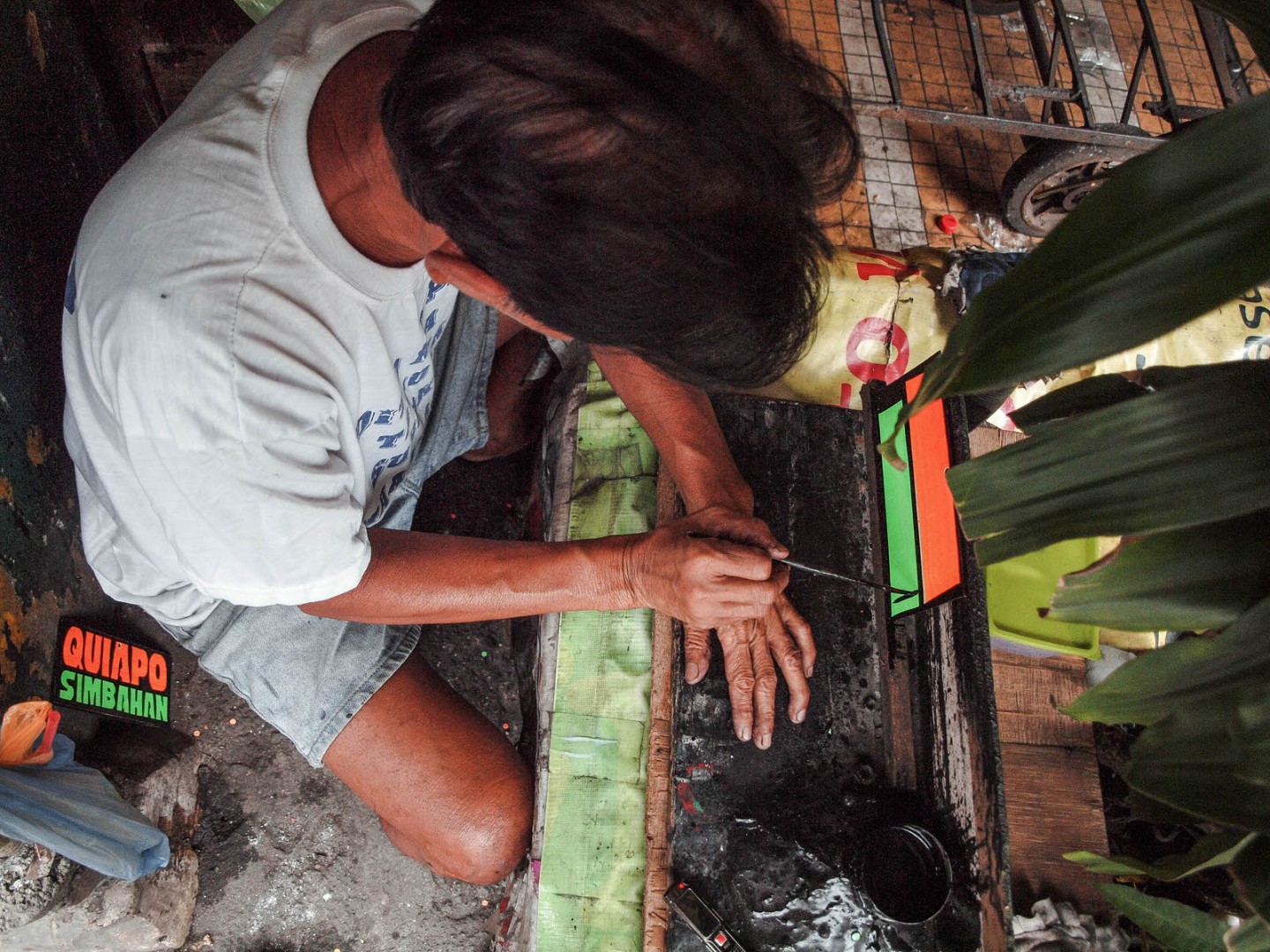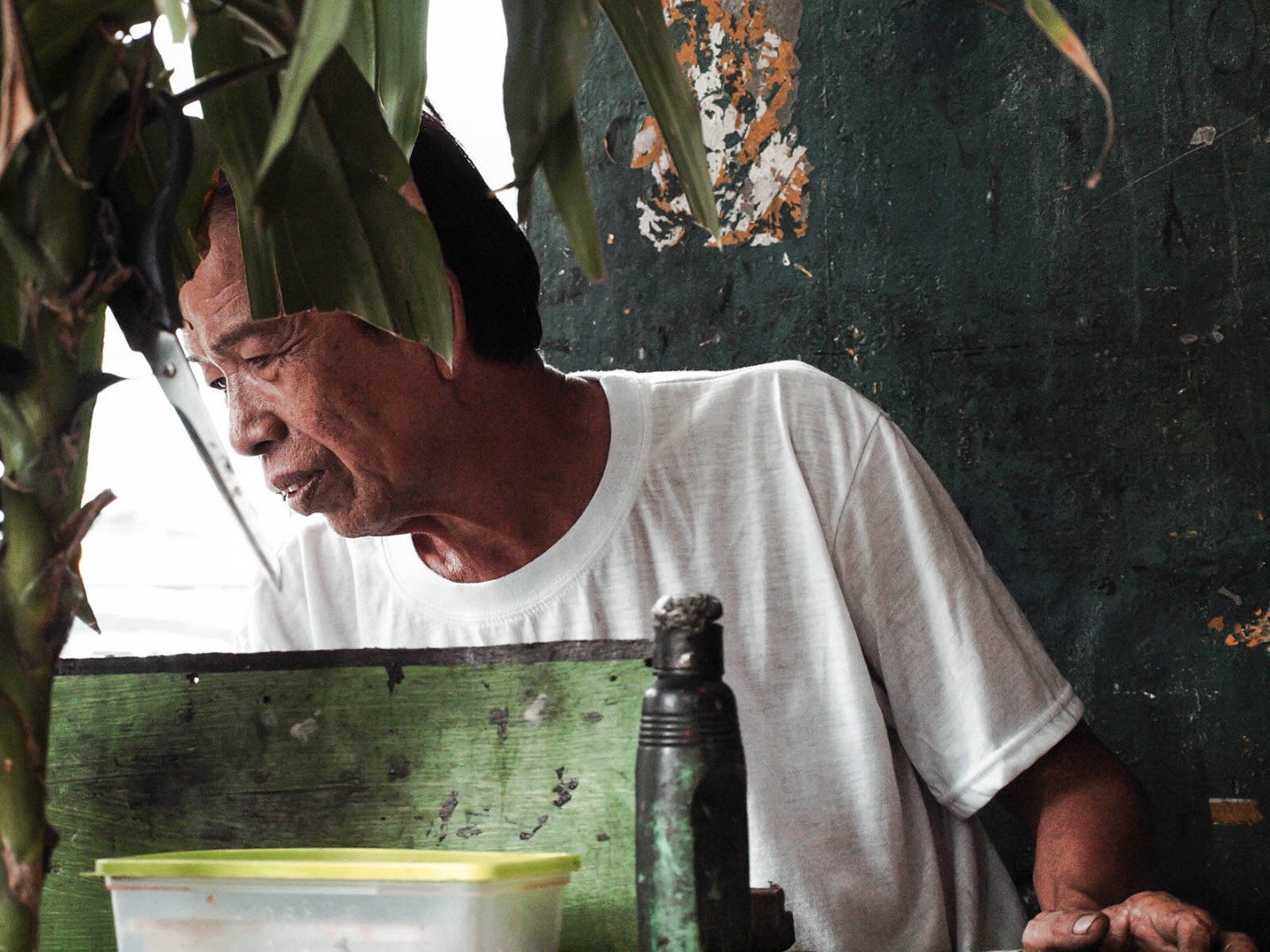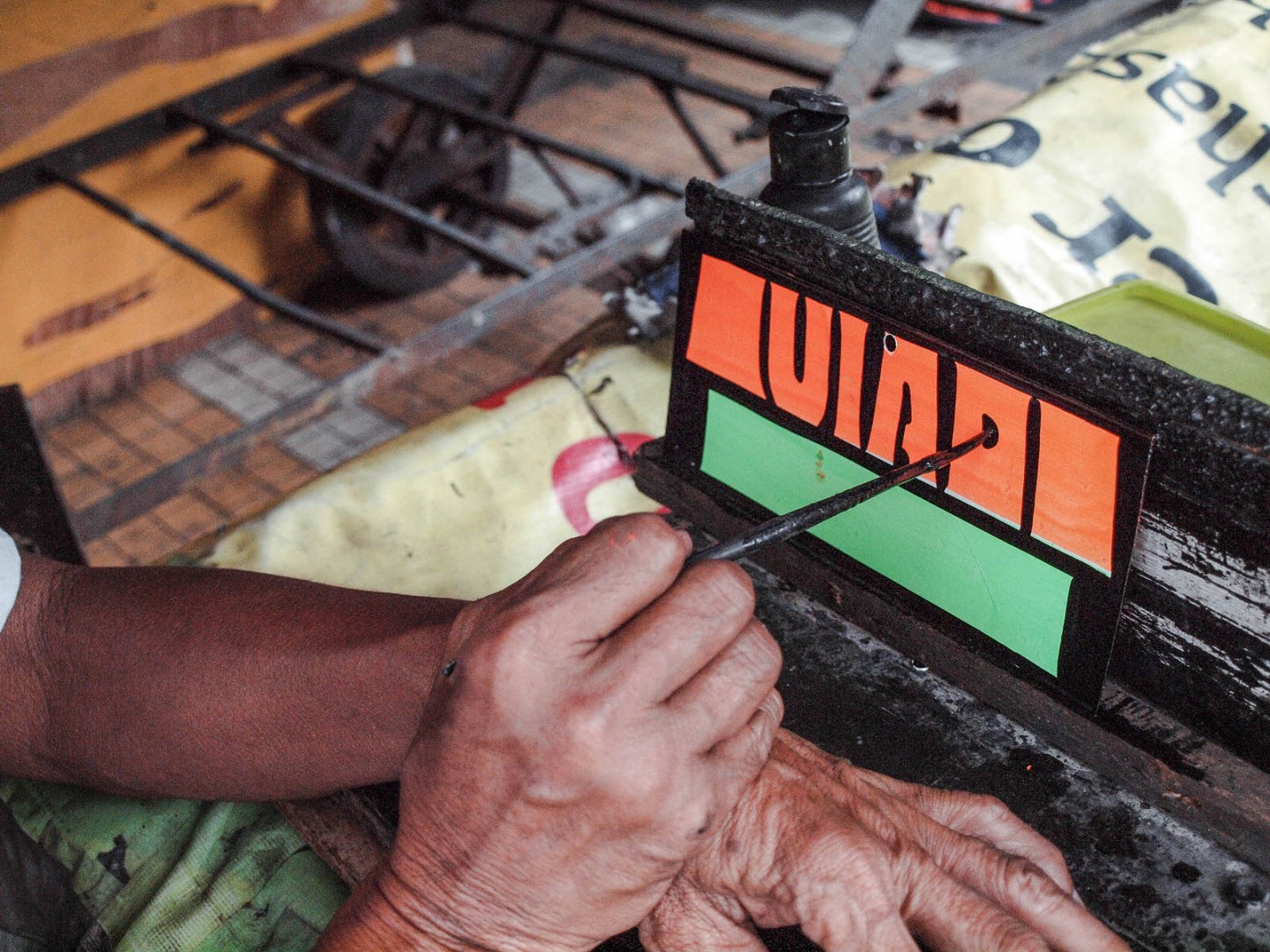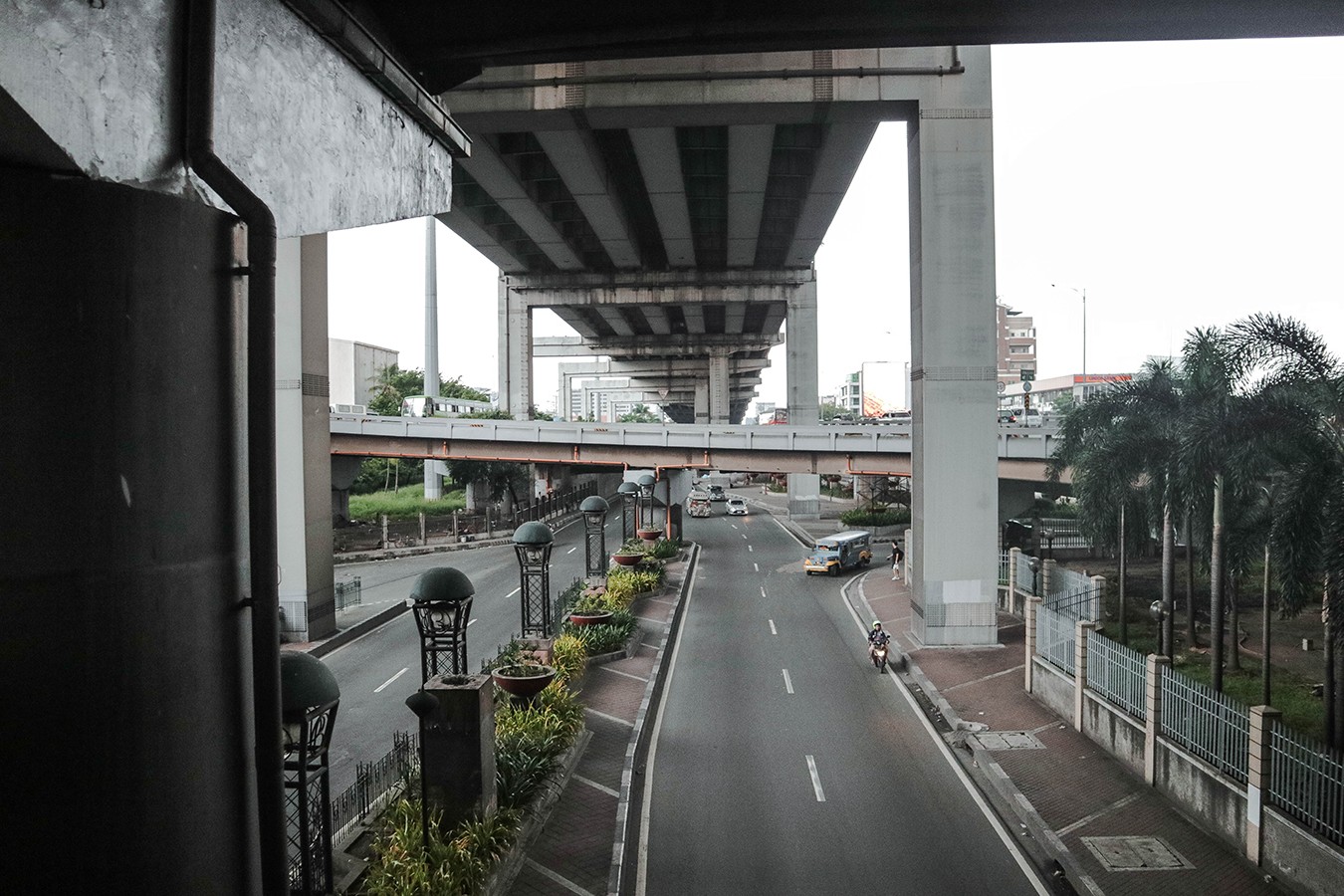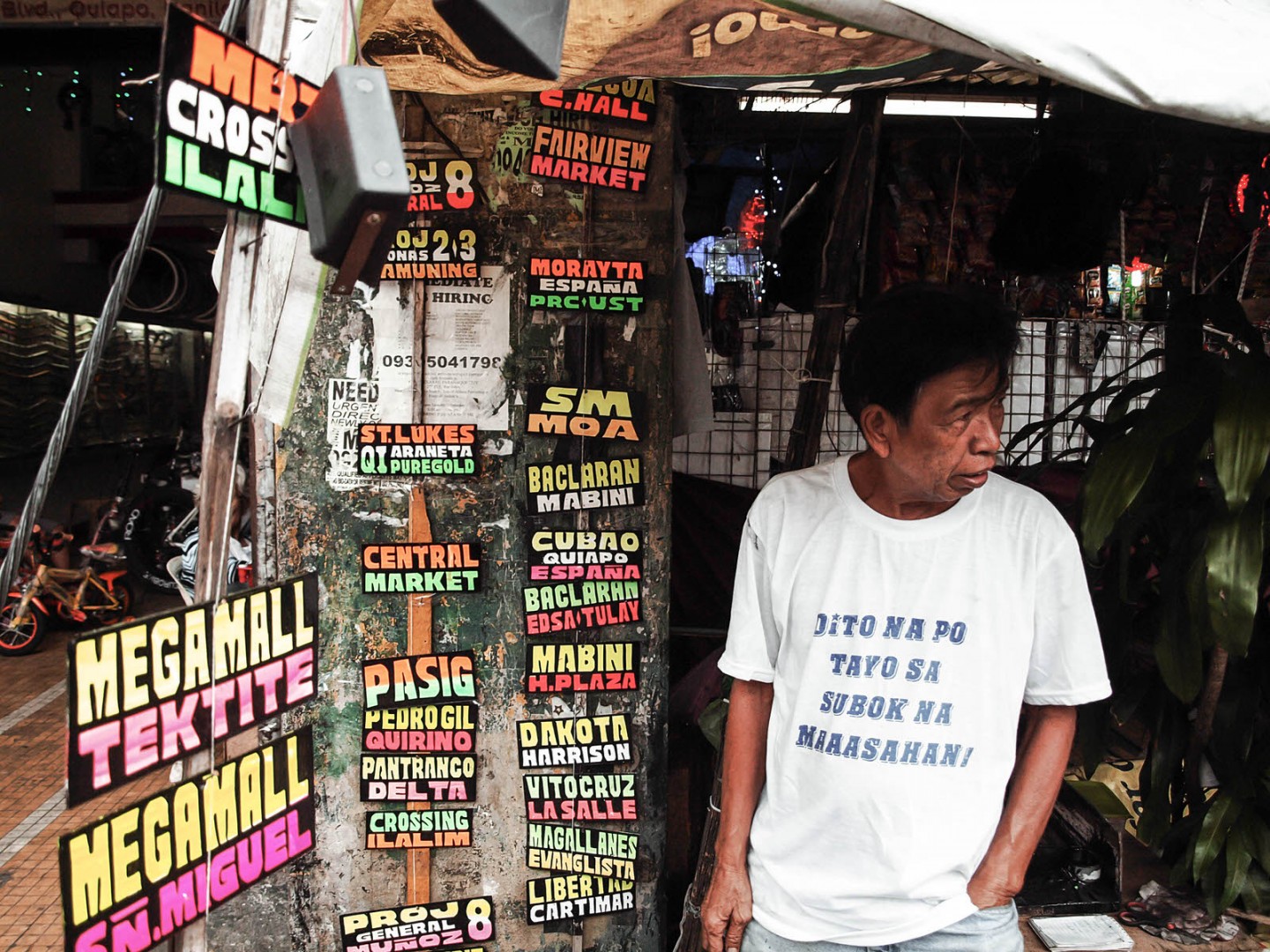
The iconic jeepney sign – the colorful signs seen on their windshields that indicate different stops – is a significant part of Manila’s street culture. It is a guide to every commuter in Manila and a vital form of contemporary urban folklore. Behind these iconic jeepney signs that are notably a big part of the famous “Philippine Jeepney” culture, is Antonio Pinto Layaw.
Despite his old age, he continues to make jeepney sign boards as a source of livelihood. Notwithstanding the daily threats of being evicted from his usual spot just along the sidewalks near Quiapo church, he carries on his trade for survival. As a father of two, he said that he is doing this for his family – to make ends meet. “Nakakasira ng ulo yung walang ipapakain sa asawa, sa pamilya,” Antonio added. (It’s deranging to have nothing to feed your wife, my family.)
Antonio has been doing the craft for more than half of his lifetime. He started making jeepney signboards in his early thirties, and even in the age of 66, he still have no plans to retire anytime soon. Given the extent of his career, one would assume that it’s enough to provide enough support for an average Filipino family. However, an average of Php 500 income during peak days, and as low as Php 250 on weaker days, easily diminishes that thought. Each signboard varies based on their size – the typical size that can be seen on jeepneys cost Php 40 and the larger ones on buses cost Php 100-150. In addition, according to Antonio, a jeepney driver only comes to him twice every month which makes it even more difficult for him. This is the reason why he also expanded his services to art sign making, custom designs, and paint jobs.
Which is why, in Antonio’s circumstance, it’s understandable that Education is the most important part of life. He noted that unlike him, he wants his children and his grandchildren to finish their studies. “Ang importante nakapagaral ka, nakatapos ka, kasi may kinabukasan,” he lectured. (Finishing school is paramount, it ensures one’s future.) Education provides a brighter future for someone like him who has been struggling in the streets for decades.
Words and Photography by John Michael Saavedra
While conversing, he also expressed his vulgar insights on politics and the state of our nation. As he noted, “pera ang batas sa Pilipino”. (Here in the Philippines, money is the law.) He believes that the government is poorly run since time immemorial because public servants became more interested on money and power than genuine public service. “Dapat sana ‘wag pairalin ang pera” he pleaded. (Money should not control us.)
With no outlines, sketches, or drafts – he paints the sign boards all by hand. He learned by heart the routes of different jeepneys in Metro Manila and how to paint them intuitively using vibrant neon colors for visibility in the streets.
These iconic signs together with other jeepney ornaments are unique expressions of Filipino identity. Aside from the colorful and lively characters of Filipinos, Antonio also noted how we are capable of being a catalyst for change. “Ang tao may pwersa kapag marami, kapag ginusto may magagawa” said Antonio. (The masses possess power when united. If there’s a will, there’s a way.)
You can spot Antonio making signs near Quiapo Church along Quezon Boulevard, Manila.


